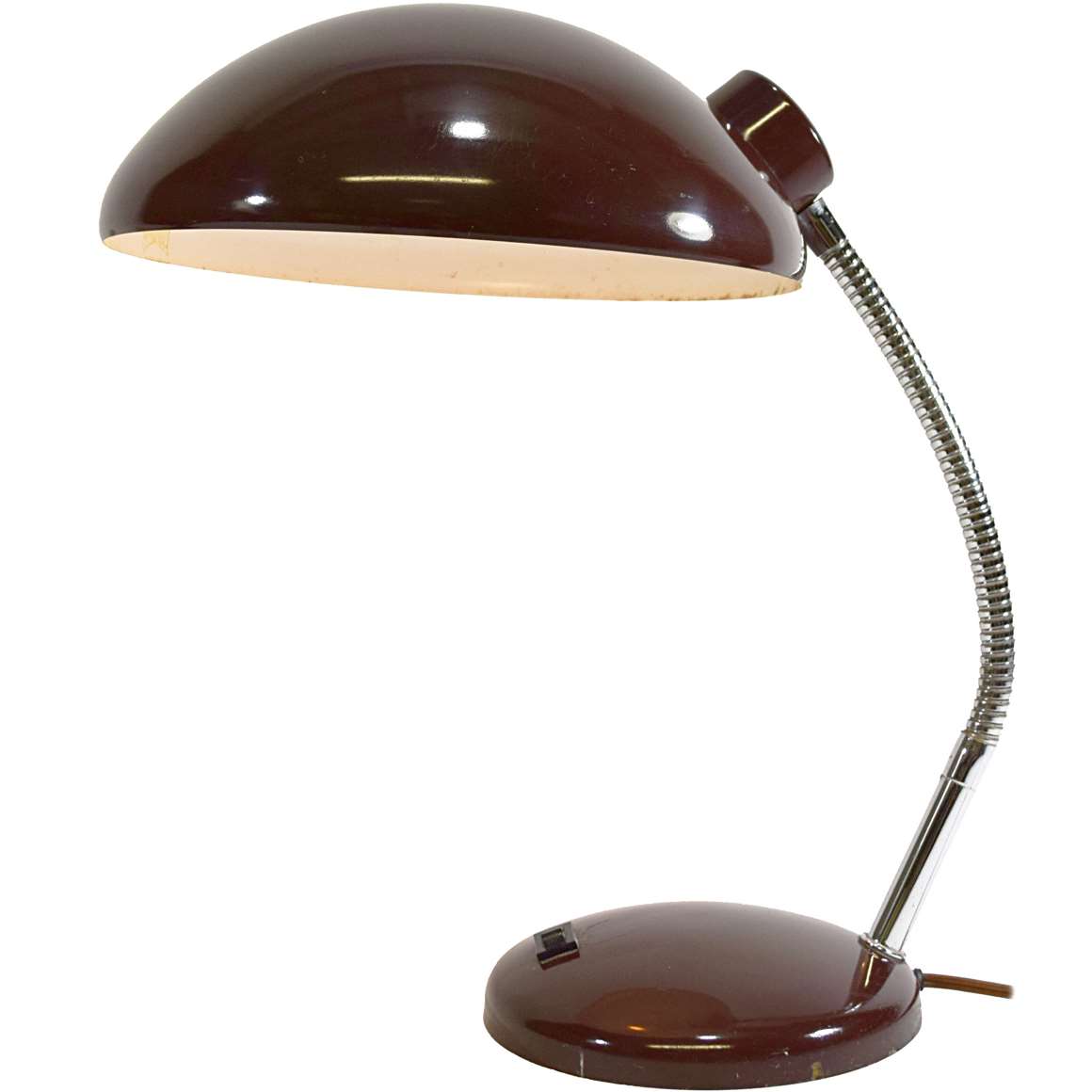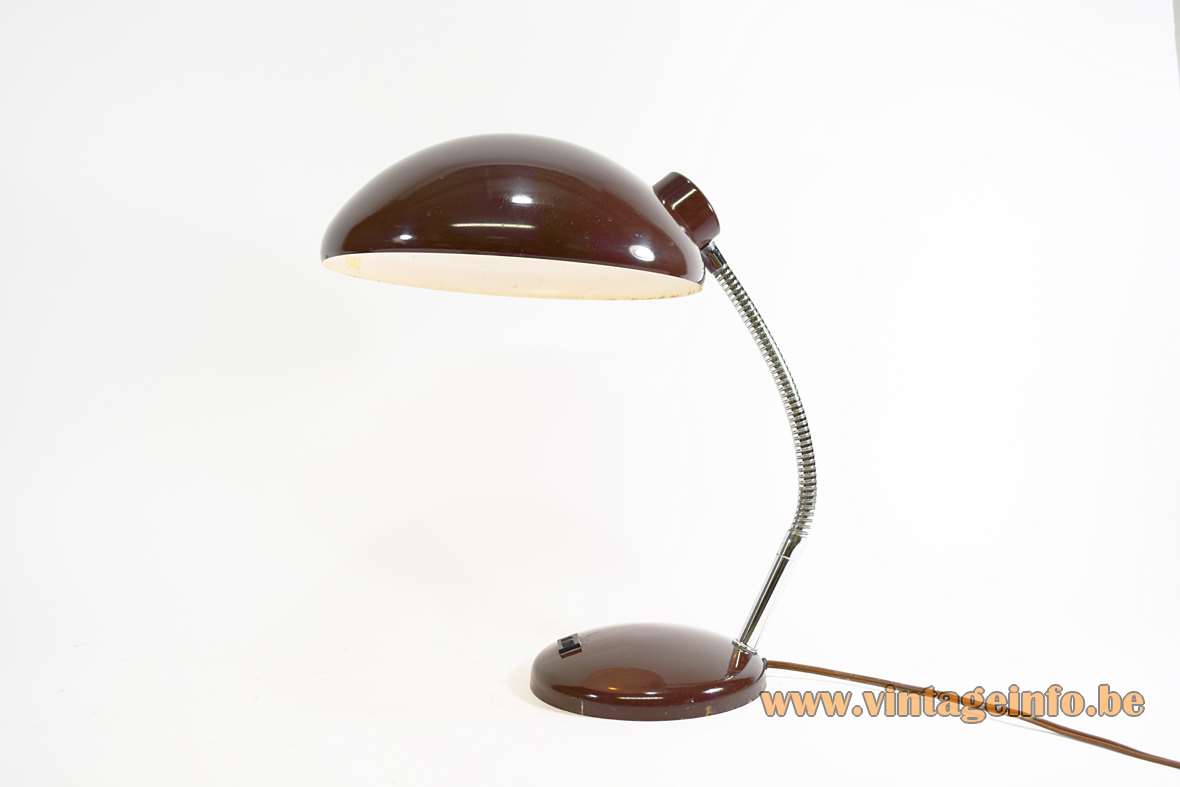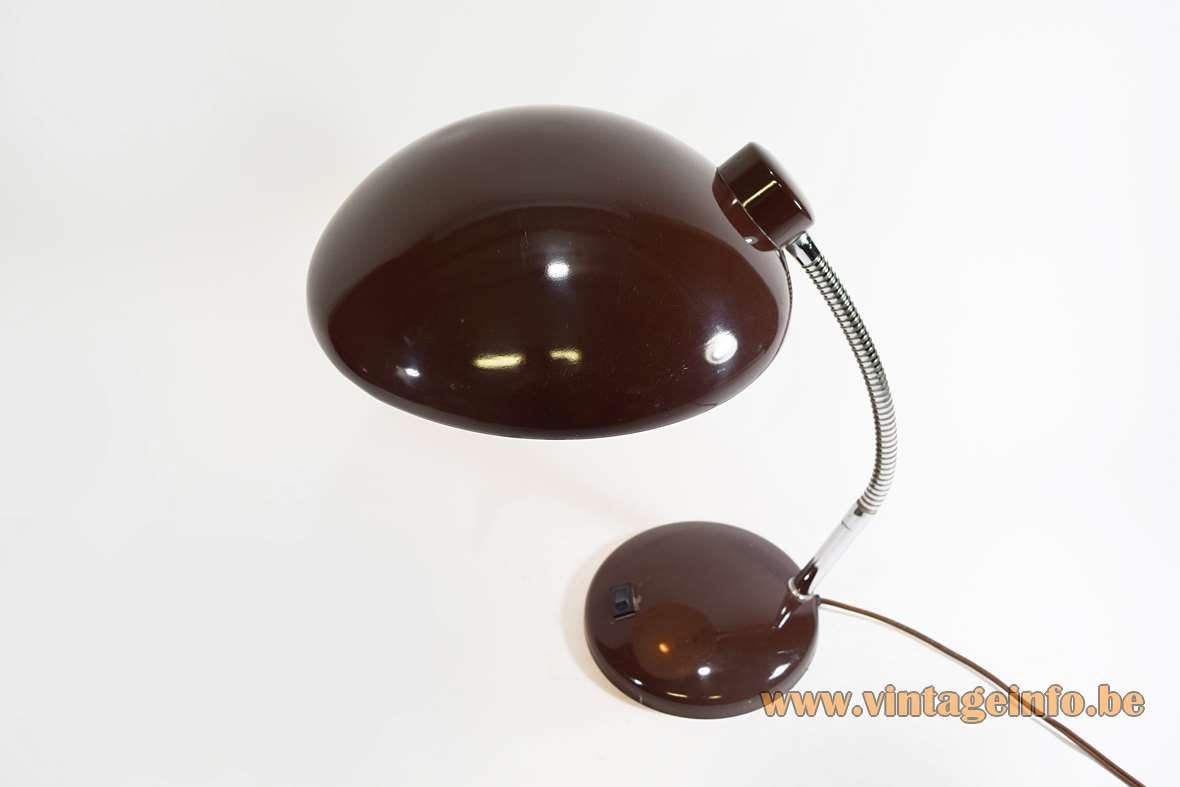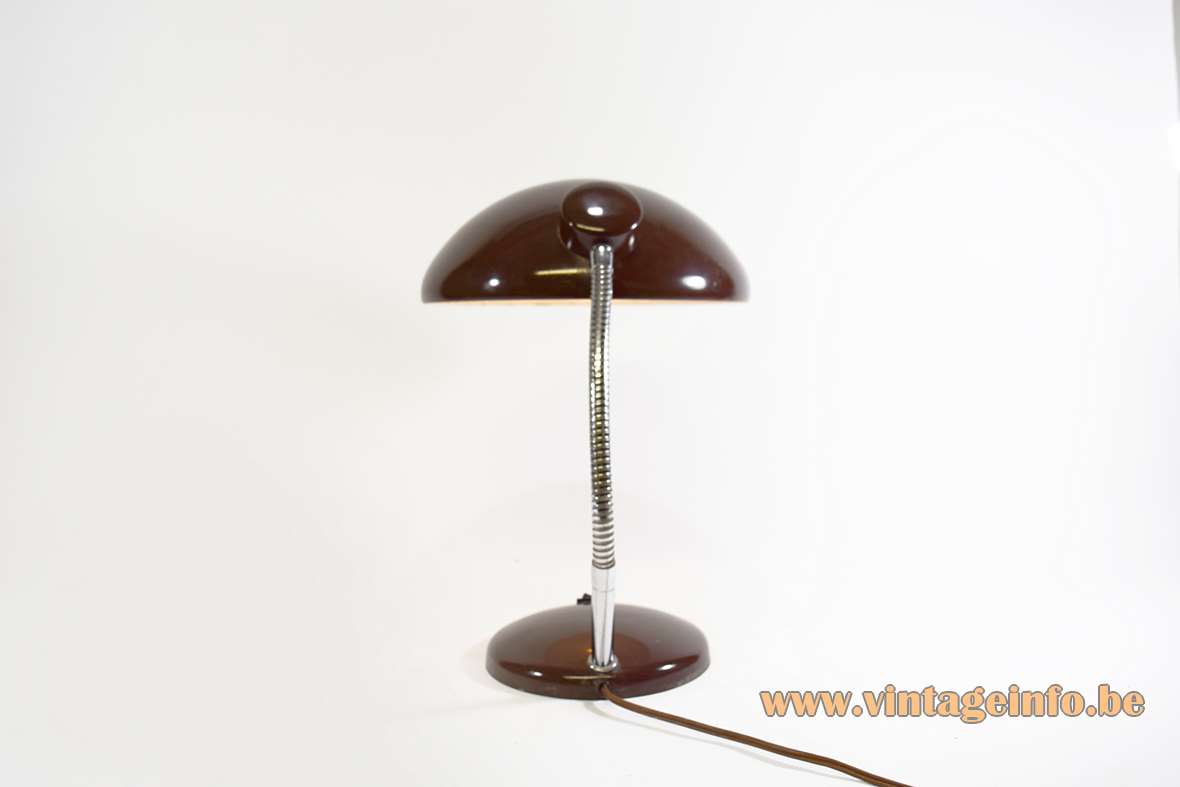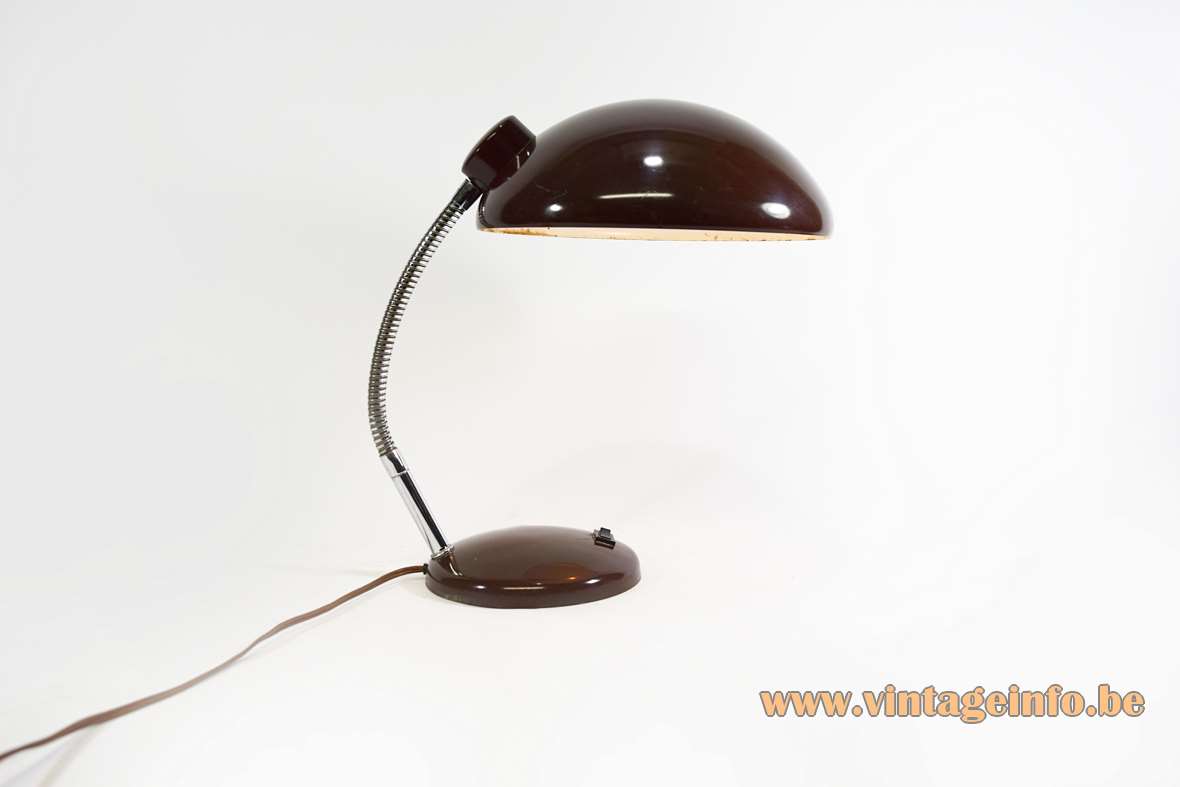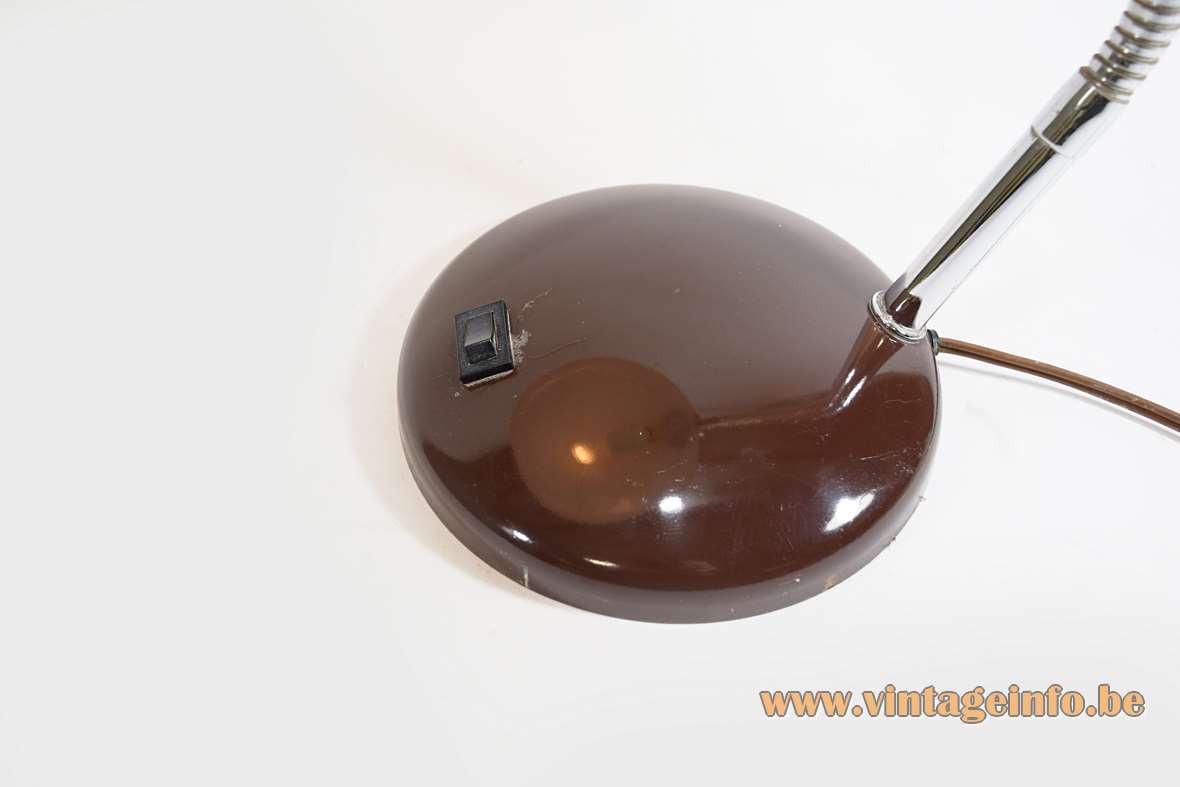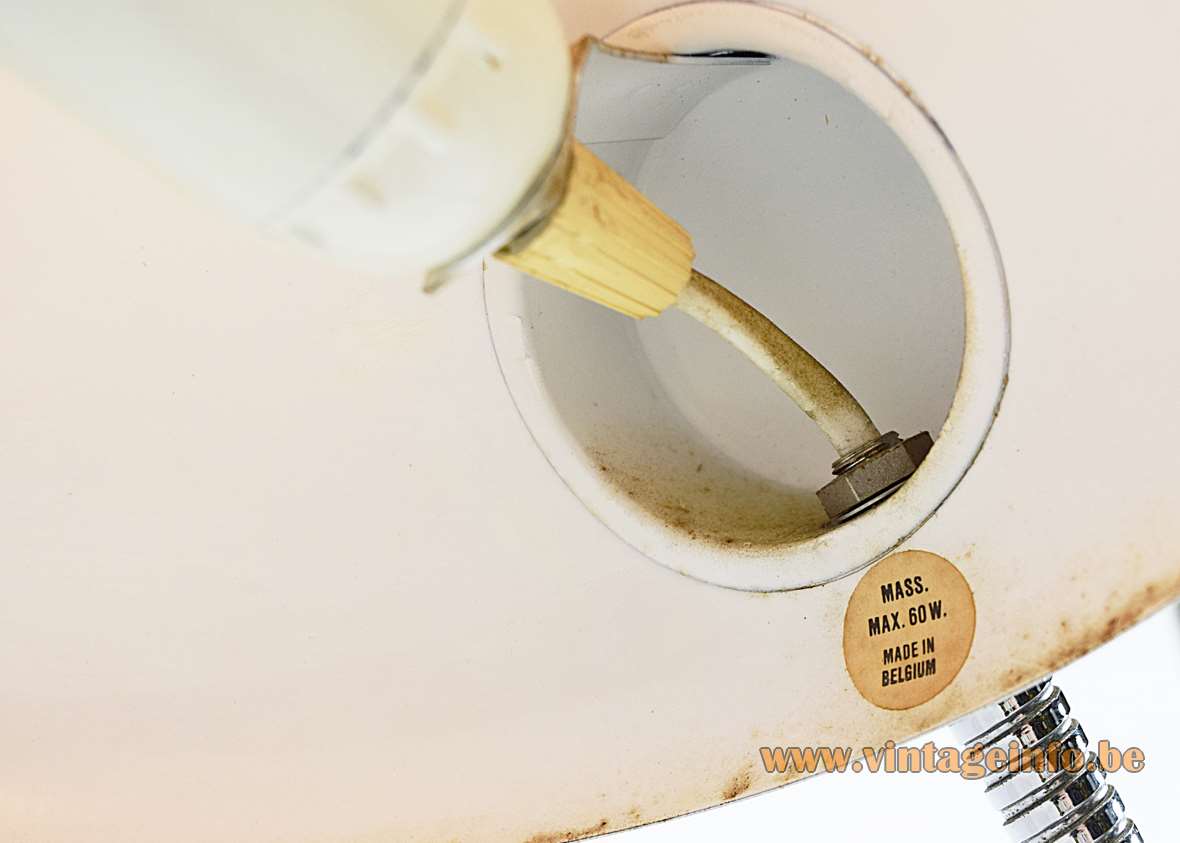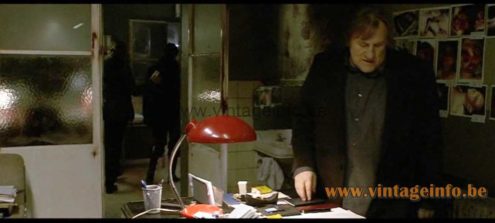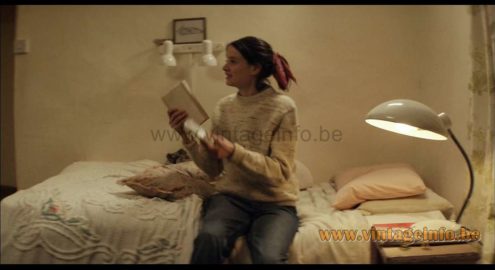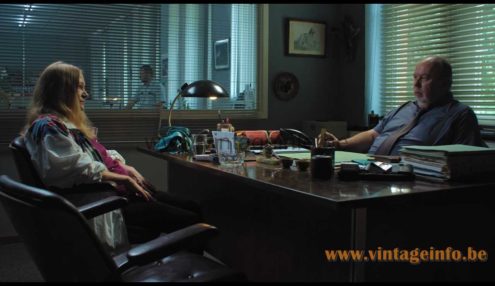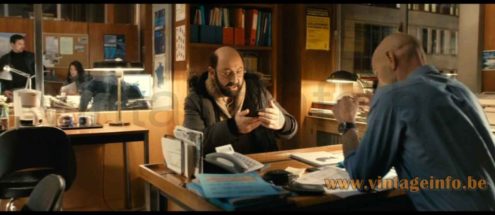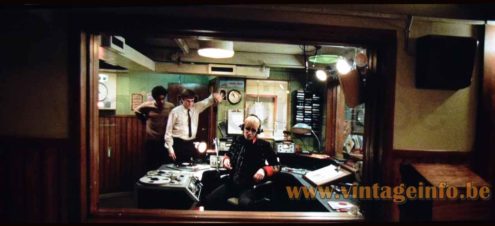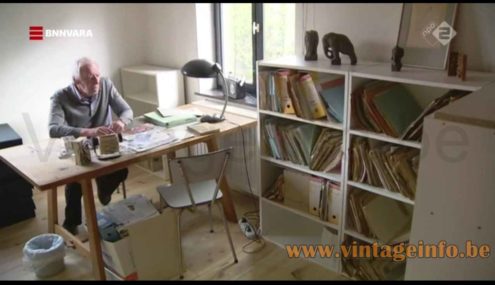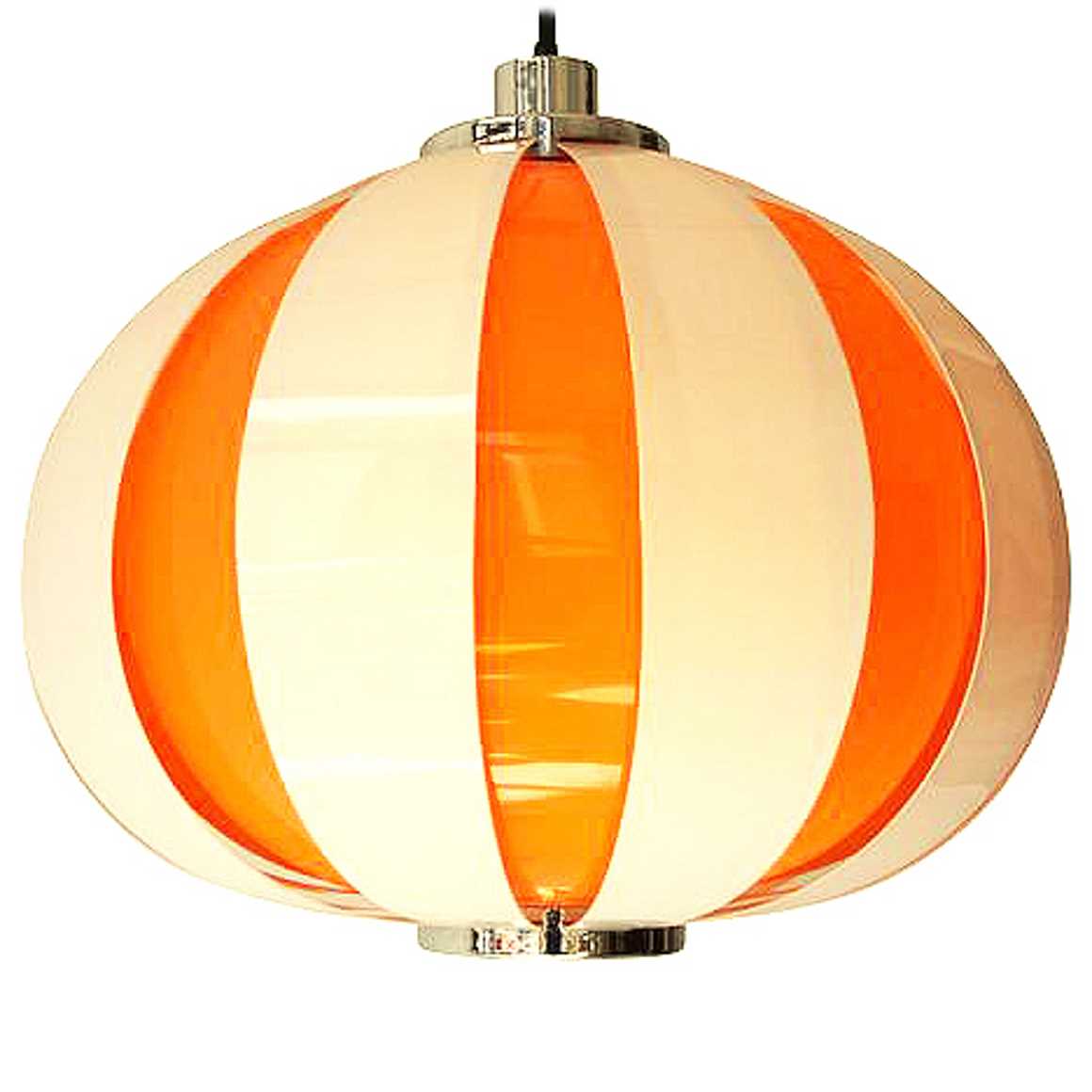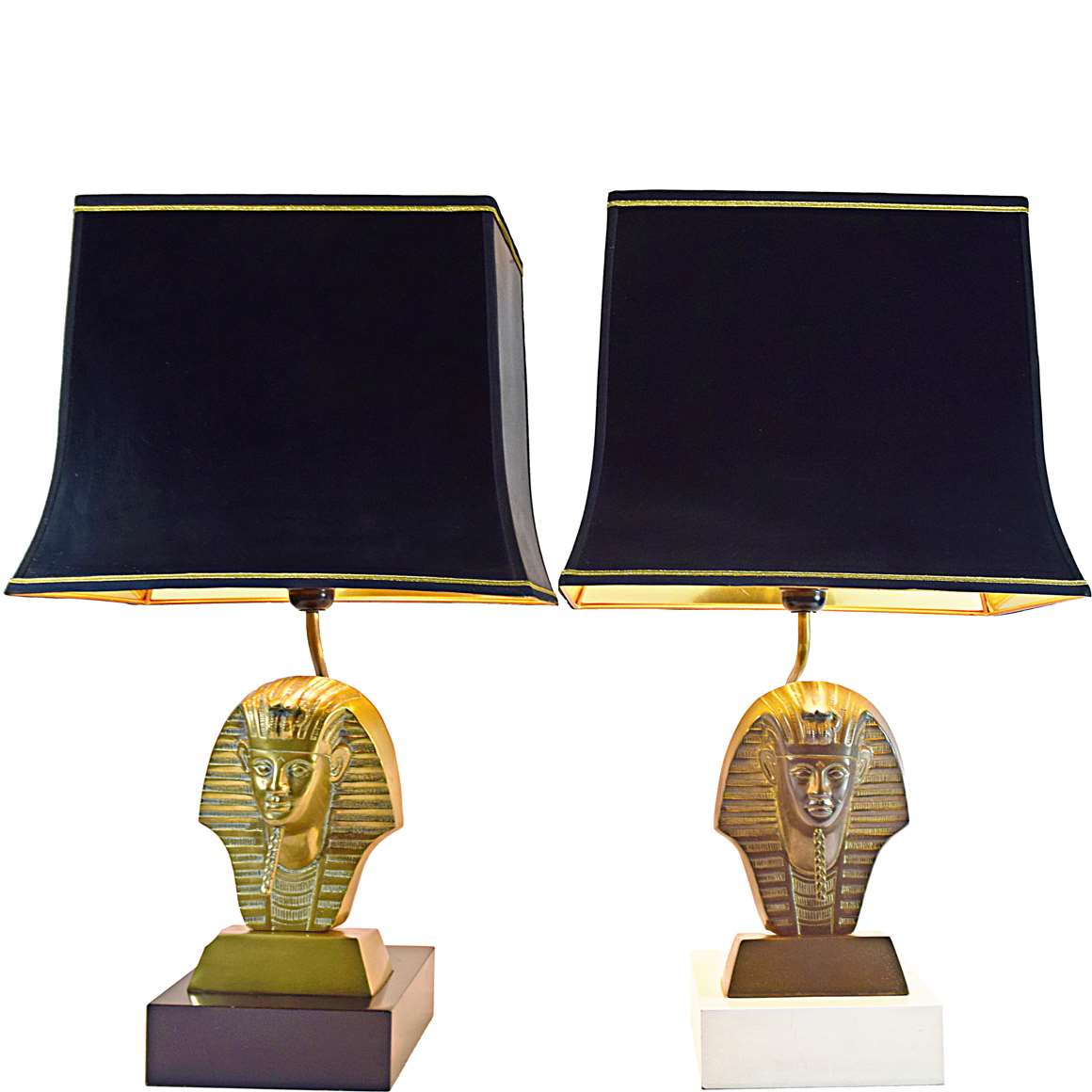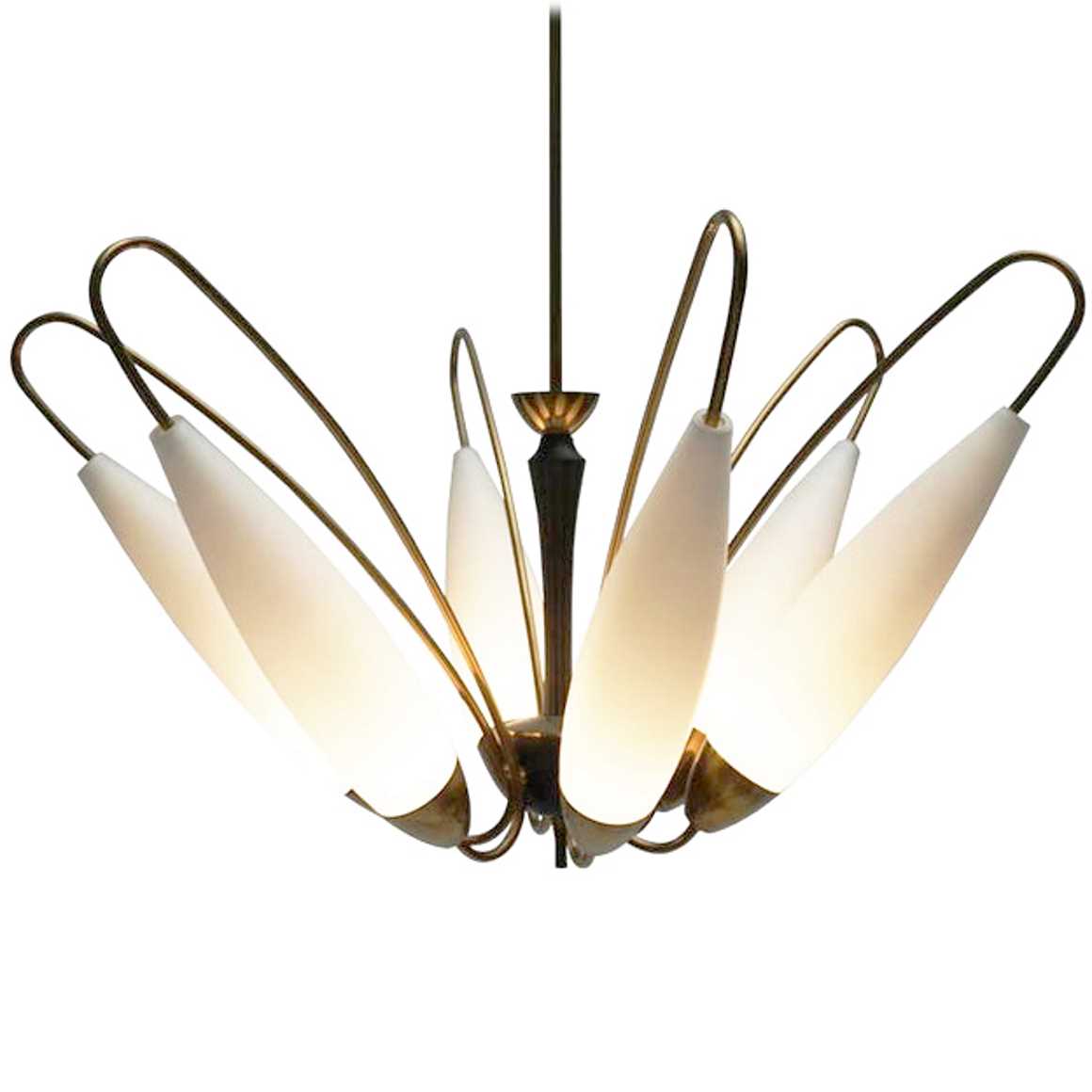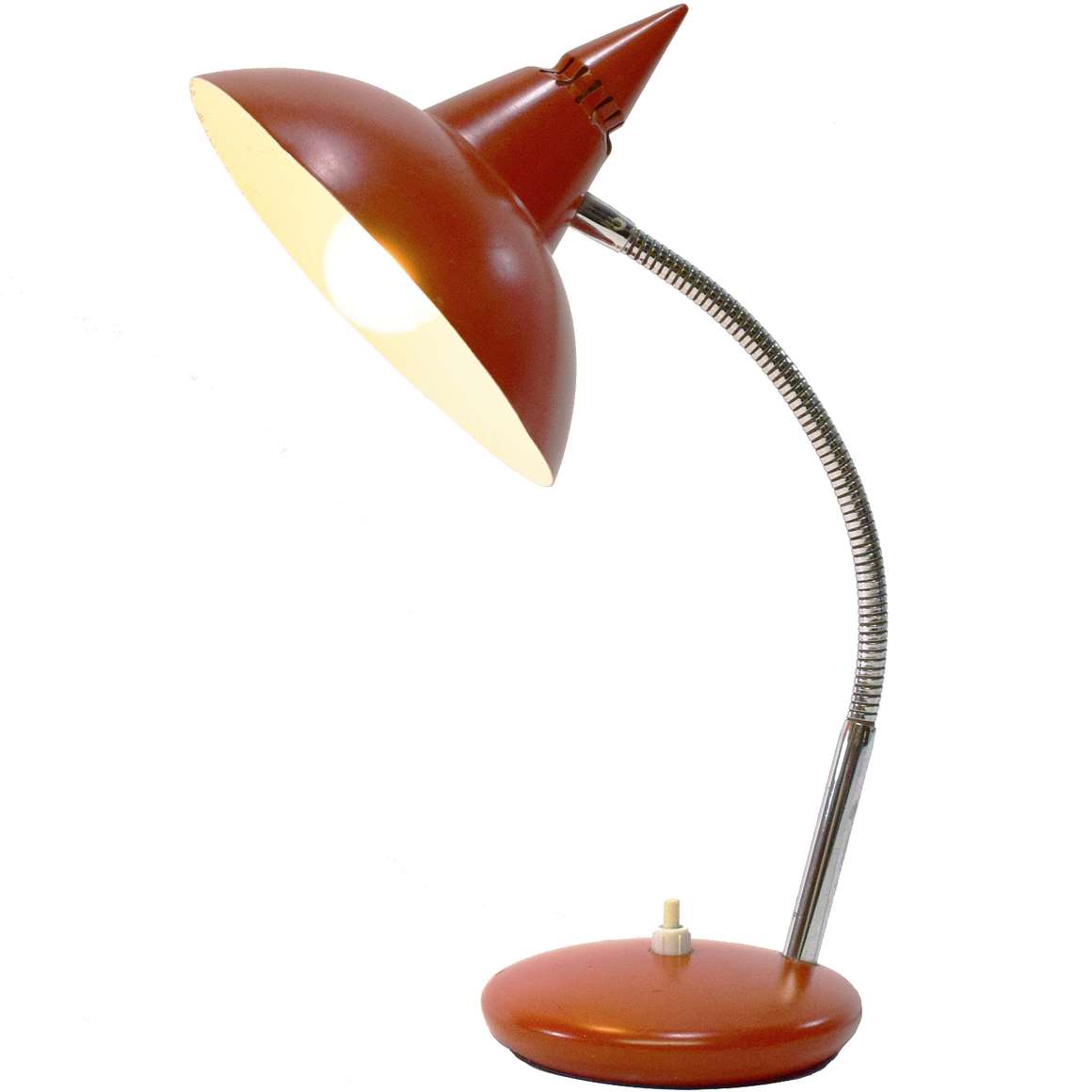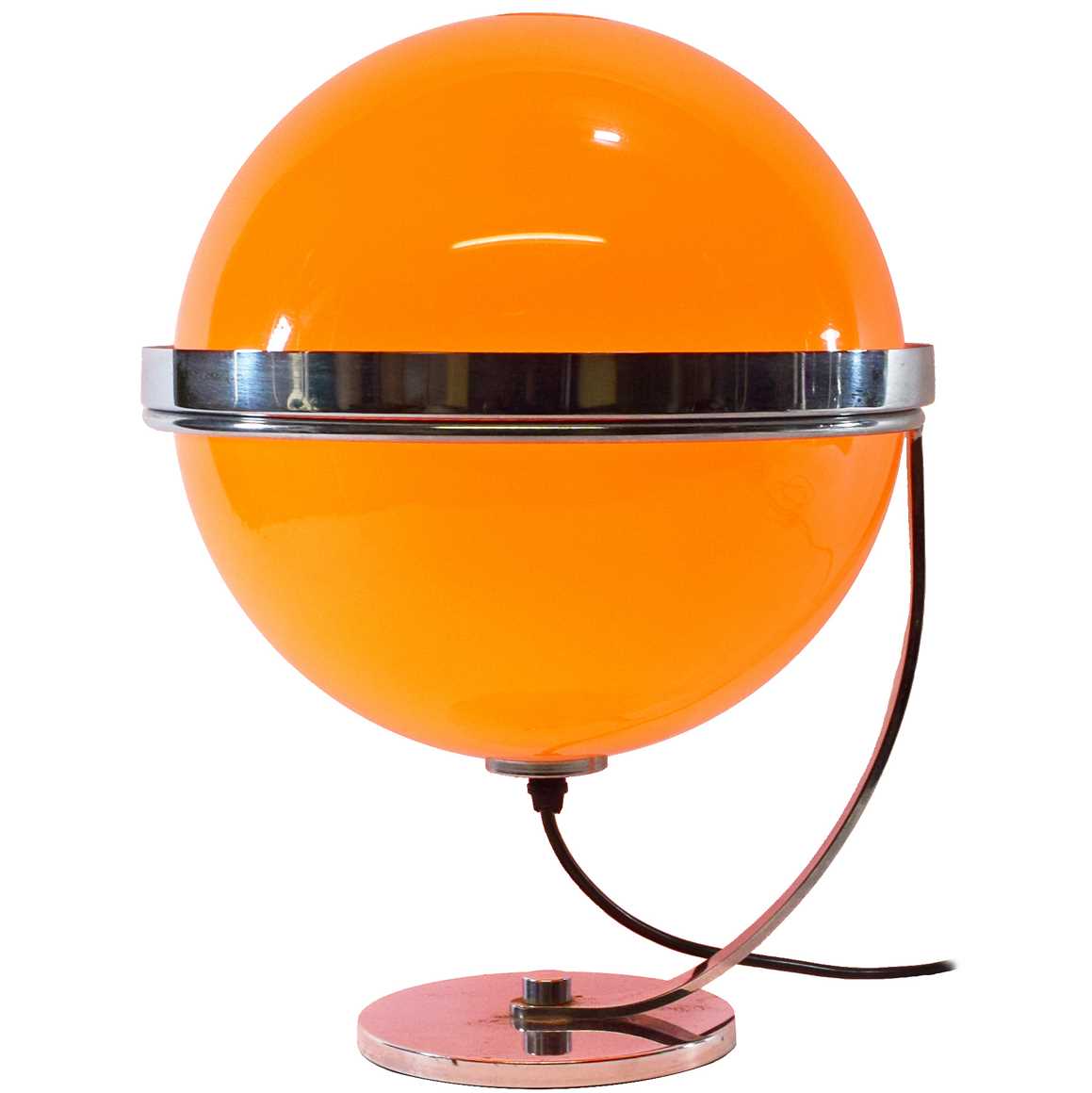1970s Bauhaus Style Desk Lamp
Lamps In The Movies!
Diamant 13 (2009)
A 1970s Bauhaus style desk lamp made by Massive was used as a set decoration in the 2009 French-Belgian-Luxembourgian film noir Diamant 13. Starring Gérard Depardieu, Olivier Marchal and Asia Argento.
Old Boys (2018)
A 1970s Bauhaus style desk lamp made by Massive was used as a set decoration in the 2018 comedy film Old Boys, starring Alex Lawther and Jonah Hauer-King. Unfortunately and hard to see, but the switch is missing.
La Trêve (2018)
A 1970s Bauhaus style desk lamp was used as a set decoration in the 2018 Belgian crime drama television series La Trêve (The Break) season 2. Starring Yoann Blanc, Guillaume Kerbusch and Anne Coesens.
Links (external links open in a new window)
Massive – Wikipedia (in Dutch)
The complete history of the Philips company
Kaiser Idell Luxus desk lamp – Fritz Hansen website
Diamant 13 (2009) film – Wikipedia
The Boat That Rocked (2009) film – Wikipedia
The Boat That Rocked (2009) film – IMDb
La Trêve – The Break (2018 TV series) – Wikipedia
La Trêve – The Break (2018 TV series) – IMDb
Supercondriaque (2014) film – Wikipedia
Supercondriaque (2014) film – IMDb
Jeroen Brouwers – Writer – Wikipedia
2 Voor 12 TV Quiz – BNNVARA Website
Vintageinfo
Older orange version of this desk lamp
Acrylic & chrome mushroom table lamp
Marble and chrome eyeball floor lamp
Acrylic & chrome mushroom table lamp
1970s Bauhaus Style Desk Lamp
Materials: Brown painted round & rounded base with a black plastic rectangular built-in switch. Chrome rod & gooseneck. Brown painted mushroom lampshade, painted white inside. Bakelite E27 socket.
Height: 43 cm / 16.92” – adjustable
Lampshade: ∅ 27 cm / 10.62”
Base: ∅ 17 cm / 6.69”
Electricity: 1 bulb E27, 1 x 60 watt maximum, 110/220 volt.
Anytypeof light bulb canbeused, not a specific one preferred.
Period: 1970s – Bauhaus, art deco style.
Designer: To be appraised.
Manufacturer:Massive, Kontich and Wommelgem, Belgium.
Other versions: Early 1970s models have a round light switch. You can find one over here. This 1970s Bauhaus style desk lamp exists in several colours. Massive produced this lamp for many years, until the late 1980s. Often confused with the lamps Christian Dell designed, the Kaiser Idell desk lamps or lamps such as the Luxus lamp by Helo Leuchten. Today in production by Fritz Hansen.
Label inside the lampshade: Mass. Max. 60W. Made in Belgium (Massimo Maximum 60 Watt). Massimo is the Italian word for maximum. Max. is used for every other language in Europe were Massive sold lighting at that time.
At Massive they were economical with the labels, they started using labels when the government had compelled them to do so. The first labels that became mandatory in Europe (EEC) were stickers that stated the maximum power of the light bulbs to be used.
Massive used the same round labels with the same font that says: Mass. Max. 60W., Made In Belgium and also a label exists with Massive Mass. Max. 60W. More info about the Massive Labels can be found over here on Vintageinfo.
Lamps In The Movies!
Supercondriaque (2014)
A 1970s Bauhaus style desk lamp was used as a set decoration in the 2014 French comedy film Supercondriaque. Starring: Kad Merad, Dany Boon and Alice Pol. On the left a Philips Timor 69 or Romeo desk lamp. You can find it over here.
The Boat That Rocked (2009)
A metallic green 1970s Bauhaus style desk lamp was used as a set decoration in the 2009 British comedy film The Boat That Rocked. Starring Philip Seymour Hoffman, Bill Nighy and Rhys Ifans.
2 Voor 12 (2022) TV Quiz
A 1970s Bauhaus style desk lamp is standing on the desk of Dutch writer Jeroen Brouwers (1940 – 1922). It appears at the 2 Voor 12 quiz (2 for 12) on the Dutch TV station NPO (BNN-Vara), 30 September 2022.
Massive
Origins and Early Growth (1926–1970s)
Massive started in 1926, when Pieter-Jozef De Jaeck founded a bronze foundry in Wilrijk, near Antwerp, Belgium. Initially, the company crafted traditional bronze items such as candlesticks, crucifixes, and chandeliers in-house using established casting methods.
However, as the market evolved during the 1930s and 1940s, Massive quickly adapted to meet changing consumer needs. Therefore, the company gradually introduced more functional lighting products for households. After World War II, electric lighting became more popular across Europe.
Consequently, Massive began combining classic design with modern electrical technology. This strategic shift enabled the brand to reach new customers and grow steadily.
By the 1950s, Massive had earned a solid reputation across Belgium. Its lighting fixtures – often inspired by mid-century trends – were both affordable and practical. Moreover, they were widely available in hardware and furniture stores. As a result, they became a staple in many homes.
In the 1960s, Eddy De Jaeck, the founder’s son, joined the company. He introduced semi-industrial production techniques and optimized logistics. As a result, Massive shifted from a craft-based workshop to a mass production business. This major change laid the groundwork for international expansion.
Design Approach and Product Strategy
Massive became known for producing lighting in the style of more exclusive brands. While they didn’t make direct copies, many of their designs were clearly “inspired” by well-known models. Nevertheless, the company also released some original highlights that stood out in their own right.
In addition to their own production, Massive distributed a significant number of lamps made by other manufacturers. This strategy was not unusual at the time. Many lighting companies across Europe followed the same practice to broaden their product range and appeal to a wider market.
International Expansion and Market Leadership (1970s–2000s)
During the 1970s, Massive expanded rapidly. With Eddy De Jaeck at the helm, and later his sons Piet and Jan De Jaeck, the company grew into a multinational enterprise. To stay affordable and increase volume, Massive moved production to Eastern Europe. Later, it extended manufacturing to China. This deliberate strategy helped the brand stay competitive in a changing market.
By the 1980s, Massive had become one of the top lighting brands in Europe. Its catalog included thousands of options for both indoor and outdoor use. Furthermore, the brand balanced style, affordability, and reliability. Because of this, it gained popularity in both Western and Eastern Europe.
In the Netherlands, Massive began operations in 1962. In addition, the company opened Massive Gorinchem in 1969. This location served as the Dutch headquarters for more than 40 years. Eventually, in late 2012, it relocated to Eindhoven.
Ownership Changes and the Philips Takeover (2002–2010)
In 2002, the De Jaeck family sold Massive to CVC Capital Partners for about €250 million. This move transformed the company into part of the new group, Partners in Lighting International (PLI).
Over the next years, PLI expanded quickly. For example, in 2005, the group acquired Modular Lighting Instruments. Then, in 2006, it added Trio Leuchten from Germany. As a result, PLI marketed over 10,000 products under brands like Massive, Lirio, Trio, Aqua, and Cucina.
The company grew further by employing about 5,000 people and operating in more than 70 countries. In 2007, Royal Philips Electronics announced plans to acquire PLI. The deal closed in 2008, which strengthened Philips ‘ position in the European home lighting market.
Soon afterward, Philips rebranded all Massive stores in Belgium as Light Gallery. By 2014, the Massive name had vanished from packaging and store displays alike.
The End of an Era and the Move to Signify (2010–2024)
After the acquisition, Massive ‘s visibility declined steadily. In 2016, Philips Lighting became a separate, publicly traded company. Then, in 2018, the company rebranded as Signify. This new identity marked a fresh focus on smart and connected lighting.
Eventually, in April 2024, Signify shut down the Light Gallery website and redirected all content to its main platform. Although the Massive name no longer appears in stores, its legacy lives on. Millions of homes throughout Europe still feature its recognizable and timeless lighting designs.
